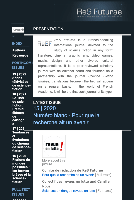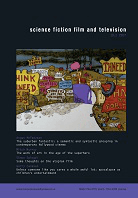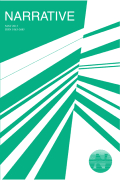
Journal of Screenwriting
Scope & Guideline
Bridging Theory and Practice in Screenwriting
Introduction
Aims and Scopes
- Interdisciplinary Screenwriting Studies:
The journal emphasizes a mix of creative and academic approaches, encouraging contributions that merge theory with practice in screenwriting. - Cultural and Contextual Analysis:
Papers often explore the relationship between screenwriting and cultural narratives, examining how scripts reflect and shape societal values and issues. - Inclusivity and Diversity in Storytelling:
There is a significant focus on gender, race, and class representations in screenplays, highlighting the importance of diverse voices in the screenwriting process. - Innovative Narrative Techniques:
The journal addresses contemporary narrative forms, including interactive and virtual reality storytelling, expanding the understanding of what constitutes screenwriting. - Historical Perspectives:
Articles frequently delve into the historical evolution of screenwriting practices, offering insights into the development of genres and styles over time.
Trending and Emerging
- Postcolonial and Transnational Narratives:
There is a growing interest in exploring screenwriting through postcolonial and transnational lenses, examining how global narratives are constructed and received. - Gender and Queerness in Screenwriting:
A significant trend is the exploration of gender dynamics and queer representation in scripts, reflecting broader societal movements for inclusivity and equality. - Interactive and Virtual Reality Storytelling:
Emerging themes include the development of narrative frameworks for interactive and VR experiences, highlighting the evolving landscape of digital storytelling. - Collaboration and Collective Writing Practices:
Research is increasingly focusing on collaborative screenwriting processes, investigating how teamwork influences narrative development and screenwriting outcomes. - Emotional and Psychological Depth in Character Development:
There is a trend towards analyzing the emotional and psychological aspects of characters, emphasizing the importance of character arcs and internal motivations in storytelling.
Declining or Waning
- Traditional Screenwriting Forms:
There appears to be a reduced emphasis on conventional screenplay structures, as newer forms and experimental narratives gain traction in academic discussions. - Focus on Mainstream Hollywood Narratives:
Research centered exclusively on Hollywood scripts is becoming less prevalent, with more attention directed towards global cinema and independent filmmaking. - Historical Figures and Classic Texts:
While historical analyses remain important, there is a noticeable decline in papers that focus solely on classical screenwriters or historical texts, as contemporary issues take precedence. - Linear Storytelling:
The exploration of linear narrative structures is waning, with increasing interest in non-linear and fragmented storytelling techniques overshadowing traditional formats. - Prescriptive Writing Techniques:
The journal is moving away from prescriptive approaches to screenwriting, such as formulaic guidelines, in favor of more exploratory and theoretical discussions.
Similar Journals

ReS Futurae-Revue d Etudes sur la Science-Fiction
Engaging Minds Through the Lens of Speculative FictionReS Futurae-Revue d Etudes sur la Science-Fiction is a pioneering open-access journal published by UNIV LIMOGES, dedicated to the critical analysis and exploration of science fiction literature and its cultural implications. Established in 2012, this journal aims to serve as a platform for researchers, scholars, and enthusiasts from diverse backgrounds to engage with the multifaceted world of science fiction, encompassing its historical narratives, thematic developments, and societal reflections. With its ISSN 2264-6949, and an unwavering commitment to accessibility, ReS Futurae invites contributions that push the boundaries of traditional discourse in science fiction studies, making it an essential resource for those keen to understand the genre's impact on contemporary thought. By fostering a rich dialogue on speculative futures, the journal contributes significantly to the academic landscape and supports the ongoing investigation of how science fiction shapes societal paradigms.

Con A de Animacion
Advancing Visual Narratives in PerformanceCon A de Animacion, published by UNIV POLITECNICA VALENCIA, EDITORIAL UPV, is a leading open access journal dedicated to the study and promotion of visual arts and performing arts. Since its inception in 2011, this esteemed journal has established itself as a pivotal platform for scholars, practitioners, and students alike, fostering innovative research and critical discourse within the realm of animation. With an impressive Scopus ranking of 263 out of 667 in the Arts and Humanities category and a Q2 quartile classification in Visual Arts and Performing Arts for 2023, Con A de Animacion holds significant influence within the academic community. Its open access policy ensures that research findings are widely disseminated, promoting accessibility and engagement across diverse audiences. By publishing high-quality research until 2024, the journal continues to serve as an essential resource, inspiring new perspectives and discussions in the vibrant field of animation.

Science Fiction Film and Television
Unveiling the Cultural Tapestry of Science Fiction NarrativesScience Fiction Film and Television, published by LIVERPOOL UNIV PRESS, is a leading academic journal that explores the rich intersection of science fiction with cinematic and television narratives. With an ISSN of 1754-3770 and E-ISSN 1754-3789, this journal provides a platform for critically engaging with both historical and contemporary works within the genre, offering insights into its cultural significance, aesthetic innovations, and societal impacts. As part of the communication and visual arts fields, it is recognized in the Scopus ranking, achieving an impressive percentile of 87th in Visual Arts and Performing Arts, and maintaining a respectable rank within communication studies. Since its inception in 2018, it aims to foster dialogues among scholars, professionals, and students, making substantial contributions to the understanding of science fiction as a vital cultural phenomenon. With access options that cater to a broad audience, Science Fiction Film and Television is essential reading for those interested in exploring the innovative potentials and narratives of science fiction across media.

JOURNAL OF SOCIAL HISTORY
Advancing Understanding of Historical DynamicsJOURNAL OF SOCIAL HISTORY, published by Oxford University Press Inc, is a leading academic journal dedicated to the interdisciplinary exploration of social history, examining the complex interactions between society, culture, and politics from historical perspectives. With an ISSN of 0022-4529 and E-ISSN 1527-1897, this esteemed journal has been contributing to the field since its inception in 1967 and continues to serve as a valuable resource through 2024. Recognized for its scholarly excellence, the journal ranks in Q2 for History and Q3 for Sociology and Political Science, highlighting its significance in both fields. Researchers, professionals, and students alike can benefit from its rich array of articles that delve into societal transformations and their historical contexts. Although it is not an open-access journal, its rigorous peer-review process ensures the publication of high-quality work that shapes current academic discourse. With a notable presence in Scopus rankings, including being placed in the 91st percentile for History, the JOURNAL OF SOCIAL HISTORY remains an essential platform for advancing knowledge and understanding of social dynamics throughout history.

NARRATIVE
Challenging Perspectives through Narrative ExplorationNARRATIVE is a distinguished academic journal published by Ohio State University Press, focusing on the intricate dimensions of literature and literary theory. Established in 2002, this journal has quickly risen to prominence, currently ranking first quartile (Q1) in its field according to 2023 metrics, and securing an impressive percentile of 94th among 1106 journals in Arts and Humanities. With its ISSN 1063-3685 and E-ISSN 1538-974X, NARRATIVE is committed to exploring the narrative structures and processes that shape our understanding of both literature and broader cultural phenomena. Although it does not offer open access, NARRATIVE proudly contributes to academic discourse by publishing articles that challenge, inform, and inspire scholars, professionals, and students worldwide. The journal continues to be an essential platform for innovative research and critical analysis, fostering dialogue at the intersection of storytelling, identity, and societal context.

Cahiers de Narratologie
Bridging Disciplines Through Narrative ExplorationCahiers de Narratologie is a distinguished academic journal dedicated to the study of narratology, published by the Laboratoire Interdisciplinaire Récits, Cultures, & Sociétés (LIRCES). Since its inception in 2001, this Open Access journal has provided a vital platform for researchers, scholars, and students to explore and disseminate knowledge on narrative theory and its multifaceted applications across various disciplines. With a commitment to fostering interdisciplinary dialogue, Cahiers de Narratologie features rigorously peer-reviewed articles, critical essays, and innovative research that delve into the complexities of narrative structures, practices, and effects in contemporary culture. As an essential resource for understanding the intersection of storytelling and cognition, this journal plays a significant role in shaping the field and supporting scholarly discourse on narratives. The journal is based at UNIV NICE-SOPHIA ANTIPOLIS, in the picturesque region of NICE, FRANCE, and continues to attract contributions from a global network of narrative researchers.

Television & New Media
Decoding the Cultural Impact of New Media TechnologiesTelevision & New Media is a leading academic journal dedicated to the exploration of the intricate relationships between television, new media technologies, and contemporary culture. Published by SAGE Publications Inc, this journal boasts an impressive impact factor, placing it in the prestigious Q1 category for both Cultural Studies and Visual Arts and Performing Arts as of 2023. Its high rankings in Scopus—#8 in Visual Arts and Performing Arts and #24 in Cultural Studies—underscore its significance in the academic community, reflecting its robust contribution to the discourse on media and culture. Spanning from 2000 to 2024, the journal features cutting-edge research that offers insights into the evolving dynamics of media and its societal implications, making it an essential resource for researchers, professionals, and students alike. Although currently not open access, the journal ensures that its contents are accessible through academic libraries, facilitating the dissemination of knowledge in an ever-changing digital landscape.

ZEITSCHRIFT FUR ANGLISTIK UND AMERIKANISTIK
Connecting Cultures Through Rigorous ResearchZEITSCHRIFT FUR ANGLISTIK UND AMERIKANISTIK is a distinguished academic journal dedicated to the fields of English studies and American studies, published by Walter de Gruyter GmbH. Nestled in Germany, the journal has carved a niche for itself since its inception, offering a vital platform for scholars interested in the nuances of linguistics, literature, and cultural studies. Although it currently operates without an open access model, its rich repository of research is invaluable for those keen to explore the historical and contemporary intersections of English and American literature. With an ongoing commitment to publishing high-quality, peer-reviewed articles, the journal has garnered attention in Scopus rankings, receiving recognition in both the Q3 and Q4 quartiles for literature and linguistic studies respectively. As a hub for innovative research, ZEITSCHRIFT FUR ANGLISTIK UND AMERIKANISTIK encourages robust dialogue and scholarly exploration, making it an essential resource for researchers, professionals, and students alike in the ever-evolving landscape of linguistic and literary theory.

Fourth Genre-Explorations in Nonfiction
Exploring the Artistry of Truth in NonfictionFourth Genre: Explorations in Nonfiction is a distinguished scholarly journal published by Michigan State University Press, dedicated to advancing the field of nonfiction literature. With its ISSN 1522-3868 and E-ISSN 1544-1733, this journal aims to foster innovative discourse and critical engagement with the diverse modalities of nonfiction writing. As part of its mission, Fourth Genre emphasizes the exploration of creative nonfiction as an art form and a medium for cultural expression, serving as a vital platform for both established and emerging voices in literary nonfiction. Despite its current categorization in Q4 in Literature and Literary Theory, the journal strives to elevate its impact and reach, creating a space for rigorous scholarship and creative practice. Researchers, professionals, and students interested in the intricate relationships between narrative form, factual content, and literary artistry will find this journal indispensable for their academic and creative pursuits. From its inception in 2010 to its convergence period extending to 2024, Fourth Genre continues to play a pivotal role in shaping discussions around the art of nonfiction storytelling.

Acta Literaria
Bridging Ideas in the Realm of Humanities and ArtActa Literaria is a distinguished journal published by the Universidad de Concepción, Facultad de Humanidades y Arte, focusing on the intricate domains of literature and literary theory. With an ISSN of 0717-6848, this Chilean journal has been a vital contributor to the scholarly discourse in its field since its inception in 2007. Although currently categorized in the Q4 quartile for the year 2023 and holding a Scopus rank of #860 out of 1106 in the Arts and Humanities section, Acta Literaria plays a crucial role in fostering dialogue and exploration among researchers, professionals, and students alike. The journal aims to facilitate the exchange of innovative ideas, critical analyses, and diverse perspectives on literature, making it an indispensable resource for anyone engaged in literary studies. While it does not offer open access, the journal's commitment to upholding academic rigor ensures that it remains a respected platform for scholarly publication.